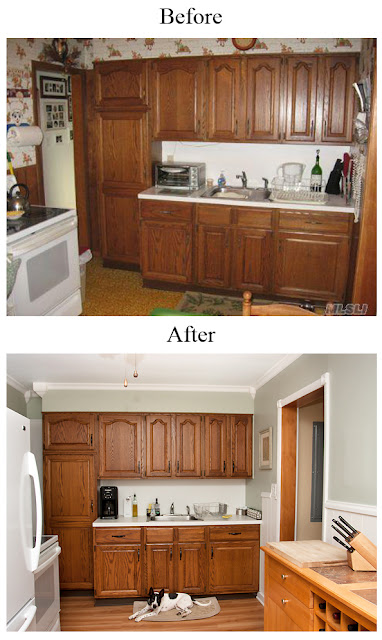Salad is a great dinner option for those of us that don't eat meat, but this healthy meal can easily be turned hearty with a few additions. Just like any good salad, the base of the dish is leafy greens.
This year we grew three types of lettuce in our garden for variety and flavor. I planted leafy green seedlings, two butter leaf lettuce plants and two green leaf lettuce plants that were purchased from the local garden shop. I selected the species of lettuce that are good for harvesting individual leaves instead of the entire head of lettuce. This option allows for continual harvesting for most of the season. Chris & I love the garden lettuce so much that when the spinach plants were past harvest, I planted a late crop of mixed lettuce seeds in their place. In New York, lettuce can be grown well into September and possibly October depending on the weather.
Once you have selected your favorite type of lettuce its time to prepare the rest of the salad fixings.
Servings: 4
Salad Ingredients
Black Olives (sliced)
1/4 cup diced red onion
1 cup diced tomatoes
14 ounces of black beans, pinto beans, or vegetarian re-fried beans
Whole grain tortilla chips (or your favorite variety)
2 cups of shredded lettuce
1 avocado cubed
Dressing Ingredients
Juice of 1 medium lime
1 tsp chili powder
1 crushed garlic clove
1 tsp sea salt
1/2 tsp ground black pepper
1/2 cup extra virgin olive oil
Directions
For Dressing
In a small bowl combine the lime juice, chili powder, garlic, salt and pepper and stir. Slowly whisk in the olive oil to emulsify the dressing. This will allow the lime juice and oil to combine in a smooth dressing. Let the flavors combine for about 10 minutes then whisk again. While you let the dressing set, start on the rest of the salad.
.JPG) |
| Chili Lime Vinaigrette |
.JPG) For Salad
For Salad
In a medium bowl combine the black olives, onion, and diced tomatoes, mix well. Add the dressing to the mixture and stir. Let the salad ingredients marinate for at least 20 minutes stirring occasionally. You can let the mixture sit for up to 1 hour and refrigerate, this will bring the juices of the tomatoes out and the flavors will combine nicely.
Once your salad mixture is done marinating heat the beans to cook them. While the beans are cooking, create a border on the plate with tortilla chips. In the center of the chip border place 1/4 of the shredded lettuce. Spoon beans around the edge of the lettuce. Spoon 1/4 of the salad mixture onto the lettuce bed. Add diced avocado to the top of the salad.
.JPG)
.JPG)
.jpg)


.JPG)
.JPG)
.JPG)
.JPG)
.JPG)
.JPG)



.JPG)
.JPG)